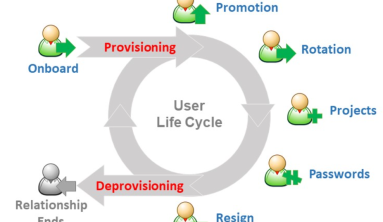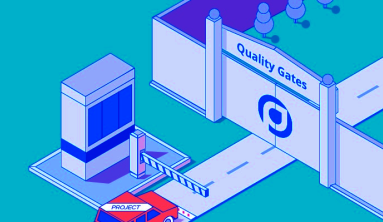Wireframing is the first step many web designers take in designing a new website. The process involves creating a visual outline of a site around which the final product will be developed.
Wireframing can undoubtedly make a web design project easier to manage. A developer can obtain client approval before beginning work, for example. Or, if you are designing your own website, a wireframe will help you formulate your ideas.
However, wireframing can also sometimes restrict the creative process. So, here is a more detailed explanation of what wireframing is and a discussion of the advantages and disadvantages of wireframing in web design.
What is a Wireframe?
A wireframe is a basic visual representation of a website’s layout and structure. The outline design can be prepared using wireline tools, such as Sketch or Adobe XD. Alternatively, a wireframe could be created using a drawing tool, such as MS Paint, or hand-drawn on paper.
The site’s outline would not include any branding, colors, or graphics. Instead, a wireframe is a basic sketch showing where components will appear on the various pages. And a wireframe Is not a mock-up or prototype, as explained below.
The Difference Between Wireframes, Mock-ups, and Prototypes
The terms wireframe, mock-up, and prototype are often confused. However, the three methods are quite different.
Wireframes
As mentioned above, wireframes are visual representations of the layout site. They are very much a sketch of the skeleton of a website rather than a prototype. Indeed, many developers create wireframes with pen and paper.
Mock-ups
Mock-ups are generally used to represent the visual design features of the site. A mock-up would typically demonstrate branding, typography, color palettes, and general look and feel. However, a mock-up would not usually be a functional site.
Prototype
A prototype is a preview of the proposed live site. Some of the final design elements of the website might be missing. And the websites will probably only contain part-finished functionality and content. However, a prototype would allow a web design client to get a feel for how the finished site will look and operate.
The Pros and Cons of Wireframing a Site
Some web developers always begin a project with a wireframe. Others prefer to dive straight in and see where the project takes them. So, what are the merits of wireframes, and what are the drawbacks. Here are the pros and cons of starting a web design project with a wireframe.
The Pros of Wireframing
Wireframing allows the site’s skeleton to be mapped out in advance of production. This approach can help manage a project and focus attention on the fundamental features. Here are some of the benefits of wireframing.
Involves Clients in Design Process
When designing a website for a client, a wireframe can help get the customer involved in the design process from the outset. A wireframe will help a client visualize the site before any development is undertaken. And, if you get client approval for the wireframe, it can avoid scope creep as the project progresses.
Saves Time and Money
All projects can be delivered more efficiently with a plan. And wireframe provides an outline plan for the design of a new website. So, wireframing can be an essential tool for managing a web design project. And it can avoid the need for costly and time-consuming redesigns later in the project. Wireframes can also help manage the delegation of tasks to a team on a larger project.
Define The Features Before Development Begins
Defining the website’s skeleton at the outset will help determine the required features. And this can avoid the need to retrofit features later. And, as mentioned above, wireframing can also help prevent a client from asking for new features in the final stages of a project.
Determine Website Responsiveness
Wireframing brings responsiveness considerations into the planning stages of a project. So, how the site will appear on various devices can be considered in the early stages of the project. And that can save time over the alternative of retrofitting responsiveness to a part-developed site.
Prioritizes User Experience
Prioritizing the user experience is fundamental to good web design, and wireframing can help in this respect, too. Sketching out user interactions with the various features on the site can help determine the best layout and structure of a website. The minimalist nature of a wireframe can also help avoid a site becoming unnecessarily complex.
Forces Early Focus on Content
Wireframes do not include the visual bells and whistles on a completed website. So, more focus can be placed on the content rather than the visually appealing aspects of the design. And content can be written to fit the site instead of designing the website around the content. However, as mentioned below, this aspect of wireframing can also be viewed as a disadvantage.
The Cons of Wireframing
So, wireframing has its advantages, particularly in terms of project management. However, there are some drawbacks to this approach, too. Here are some reasons why not all web designers are big fans of wireframing.
Unnecessary Extra Step in The Process
Wireframing a site does take time, which can add to the length of a project. The delay caused by wireframing can also be exacerbated by lengthy debates with a client over the proposed design of the site. And this is why some developers prefer to skip the step and move straight to developing a prototype or mock-up.
Difficulties Visualizing a Site from a Wireframe
Wireframes look like an outline sketch. So, it can be challenging for some people to visualize a site from a sketchy outline. When this happens, the only way to prove a concept is with a mock-up or prototype that looks more like the finished product.
Prioritizes Form Over Content
As mentioned above, wireframing can force content writers to produce content to fit the site. However, proponents of the content-first approach to web design would argue that this is the wrong way around.
Restricts Creative Freedom
Perhaps the most significant criticism of wireframing is that it can place too much emphasis on structural design. And, once a wireframe is agreed upon, some web designers feel constrained by the outline that must be followed. After all, some of the best web design inspiration comes in the thick of the development process.
Conclusion
To sum up, wireframing can be a valuable tool for managing a web design project. But the process can be restrictive for the more creative designers. Still, most people begin design projects with a wireframe. Often, though, the wireframe is only a back-of-the-envelope sketch. So wireframing will only hinder creativity if you stick to the wireframe too rigidly.





